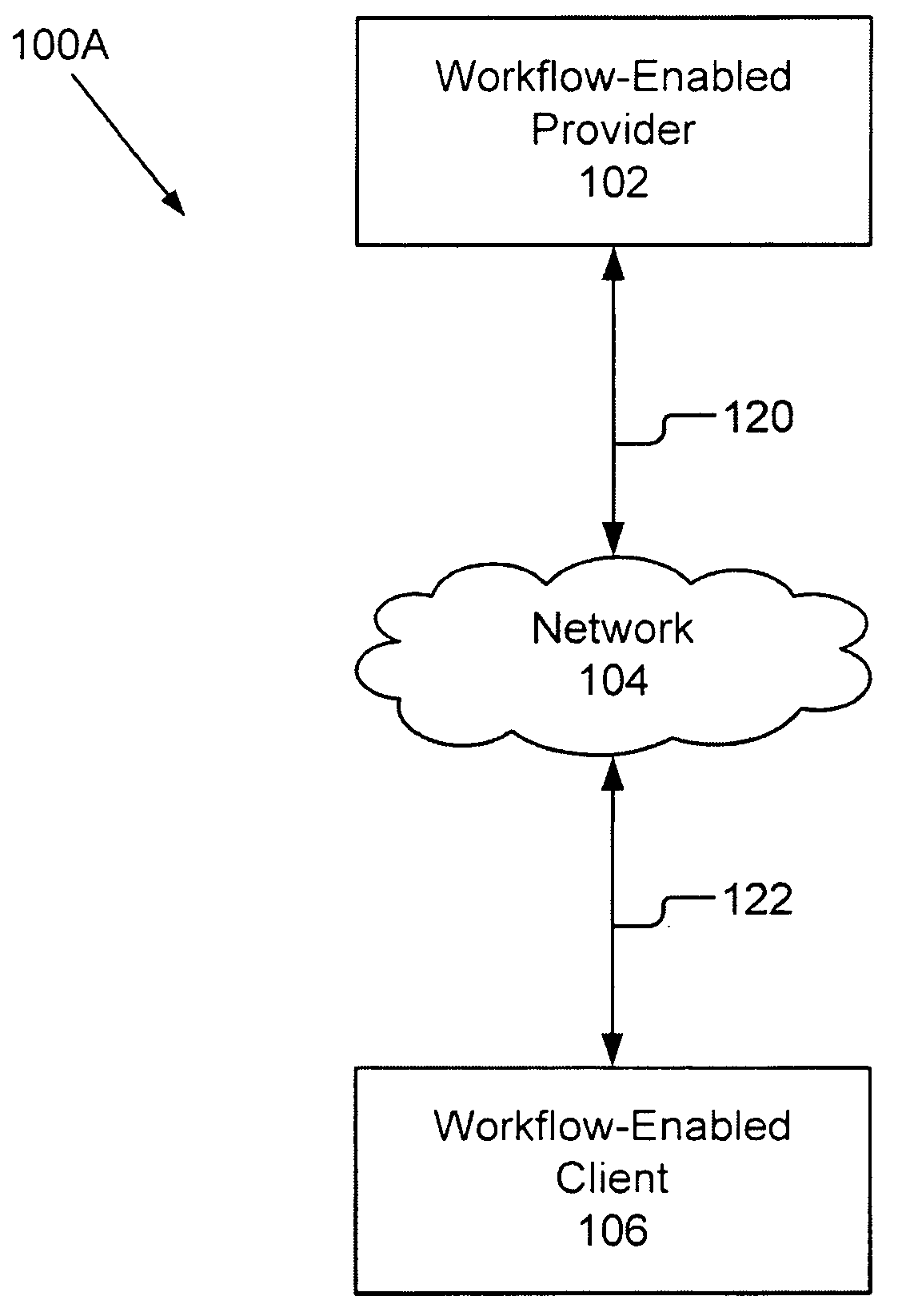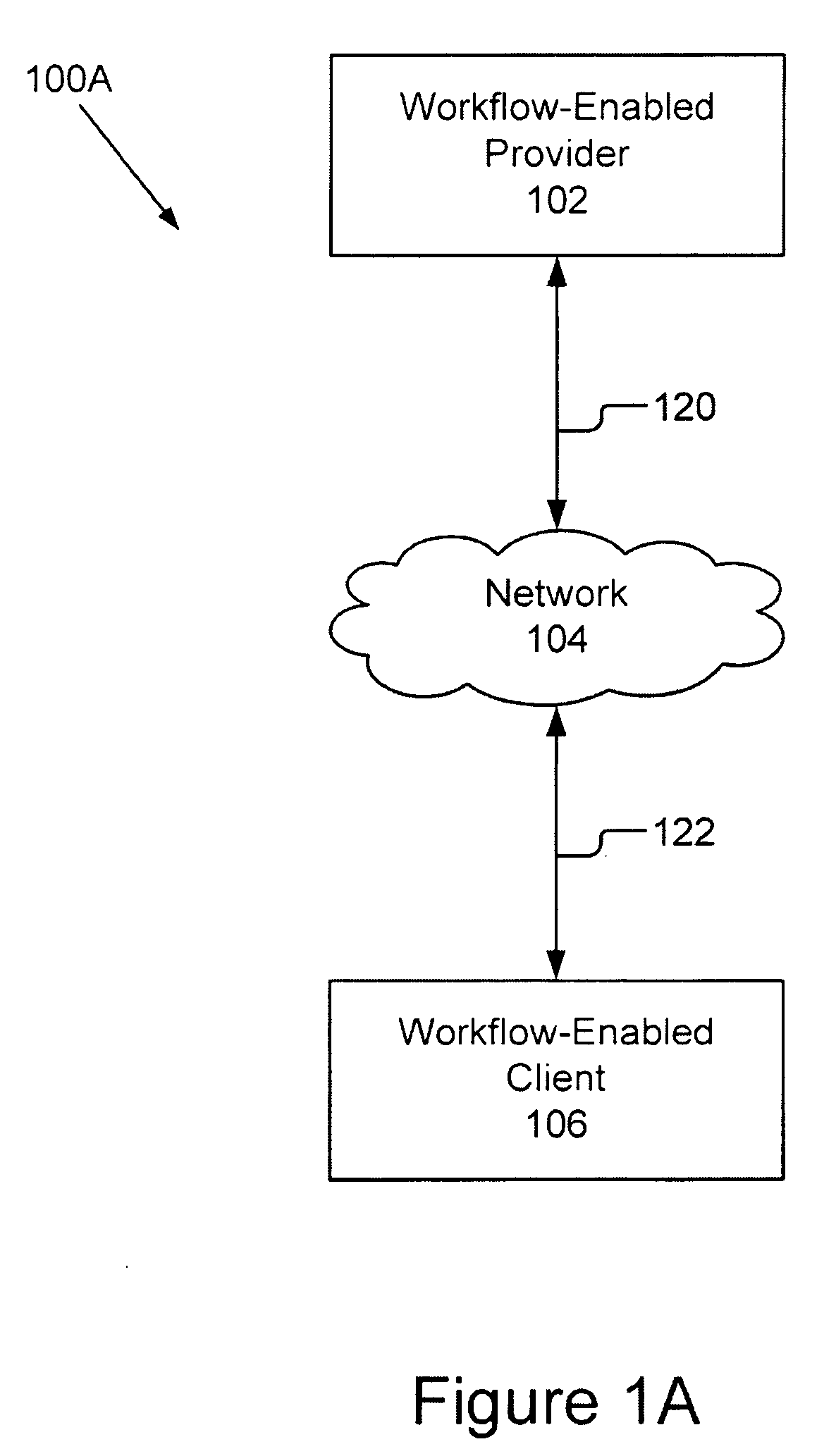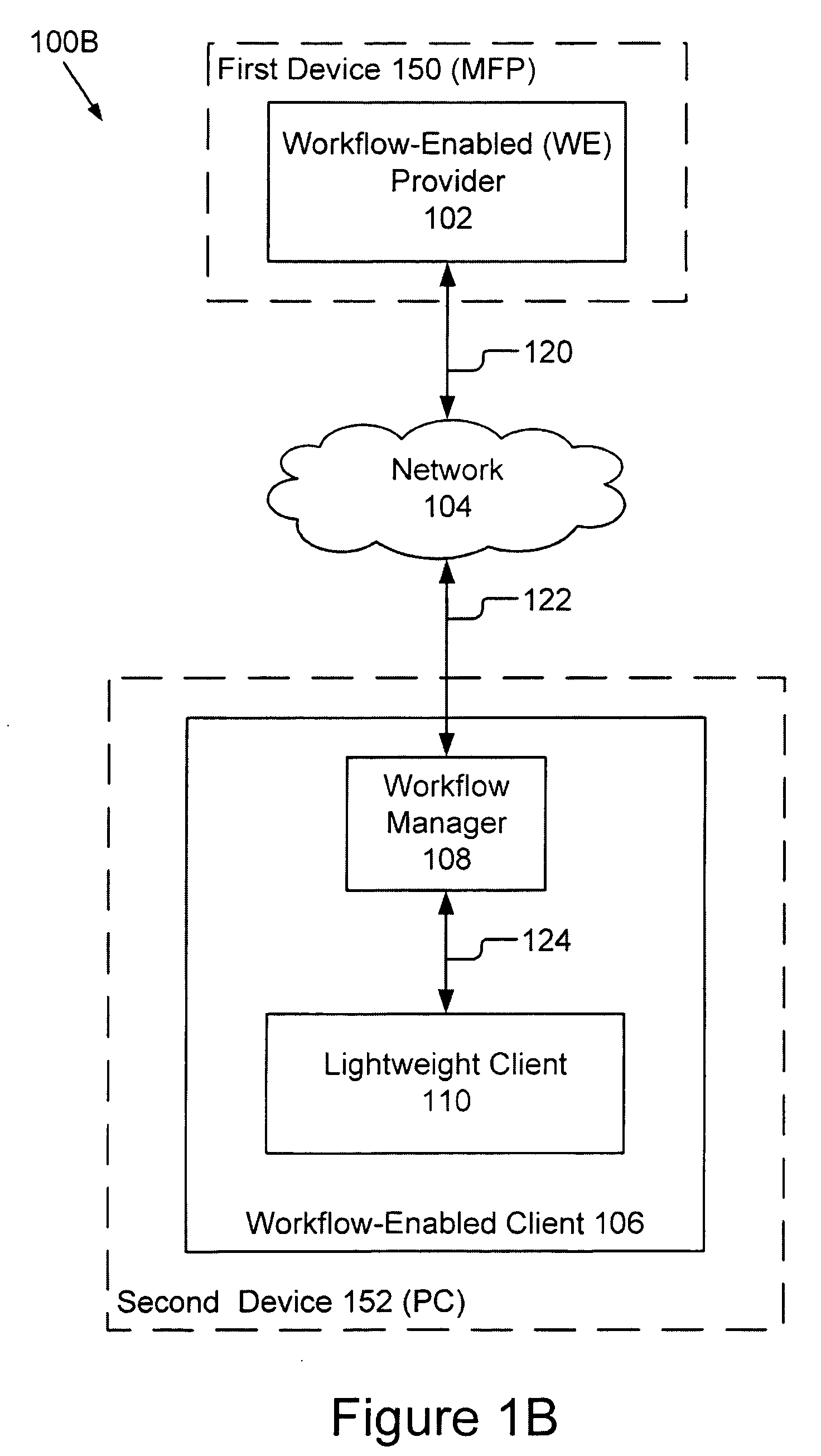Workflow Manager For A Distributed System
a workflow manager and distributed system technology, applied in the field of distributed computing systems, can solve the problems of no flexibility in how to interact with the devices, no way for any new device to be added to the landscape, and limited ability to interface with peripheral devices
- Summary
- Abstract
- Description
- Claims
- Application Information
AI Technical Summary
Benefits of technology
Problems solved by technology
Method used
Image
Examples
first embodiment
[0050]FIGS. 1A-1E show various embodiments of a distributed workflow-enabled system 100A-100E configured in accordance with the present invention. Referring now to FIG. 1A, the distributed workflow-enabled system 100A comprises: a workflow-enabled provider 102, a network 104 and a workflow-enabled client 106. FIG. 1A illustrates a minimal configuration for the distributed workflow-enabled system 100 of the present invention with one workflow-enabled provider 102 and one workflow-enabled client 106. The workflow-enabled provider 102 is coupled communicatively to the network 104 by signal line 120. The workflow-enabled client 106 communicatively is coupled by signal line 122 to the network 104. The workflow-enabled provider 102 can perform any variety of service operations depending on its hardware, software and connectivity. The service operations of the workflow-enabled provider 102 include but are not limited to scanning, print, photographing, copying, facsimile transmission, optic...
second embodiment
[0053]FIG. 1B shows the first and preferred configuration of the second embodiment for the distributed workflow-enabled system 100B in which the components of the system 100B are software operational on multiple devices. In this first configuration, a first device 150, for example a MFP, includes the workflow-enabled provider 102 while the second device 152, for example a personal computer, includes the workflow-enabled client 106. The workflow-enabled client 106 further comprises a workflow manager 108 and a lightweight client 110. The workflow-enabled provider 102 is coupled by signal line 120 to the network 104. The workflow-enabled client 106, in particular the workflow manager 108, is coupled by signal line 122 to the network 104. The workflow manager 108 is in turn coupled for communication by signal line 124 to the lightweight client 110. The workflow-enabled client 106 is operational on the personal computer. Although only a single lightweight client 110 is shown, those skil...
third embodiment
[0058]FIG. 2 is a block diagram of a complex distributed workflow-enabled system 200 configured in accordance with the present invention. FIG. 2 illustrates yet another embodiment of the distributed workflow-enabled system 200 where there are multiple workflow-enabled providers 102a-102n and multiple workflow-enabled clients 106a-106n.
[0059]As shown in FIG. 2, the network 104 is coupled by signal lines 120 to a plurality of workflow-enabled providers 102a-102n. In one embodiment, the present invention may be implemented as software that may be installed onto a plurality of conventional provider devices. In another embodiment, the present invention is implemented as hardware that is built into the plurality of conventional provider devices. Once such devices have been enabled with the software of the present invention, they become workflow-enabled providers 102a-102n. The plurality of workflow-enabled providers 102a-102n in this embodiment includes: a workflow-enabled printer 102a, ...
PUM
 Login to View More
Login to View More Abstract
Description
Claims
Application Information
 Login to View More
Login to View More - R&D
- Intellectual Property
- Life Sciences
- Materials
- Tech Scout
- Unparalleled Data Quality
- Higher Quality Content
- 60% Fewer Hallucinations
Browse by: Latest US Patents, China's latest patents, Technical Efficacy Thesaurus, Application Domain, Technology Topic, Popular Technical Reports.
© 2025 PatSnap. All rights reserved.Legal|Privacy policy|Modern Slavery Act Transparency Statement|Sitemap|About US| Contact US: help@patsnap.com



